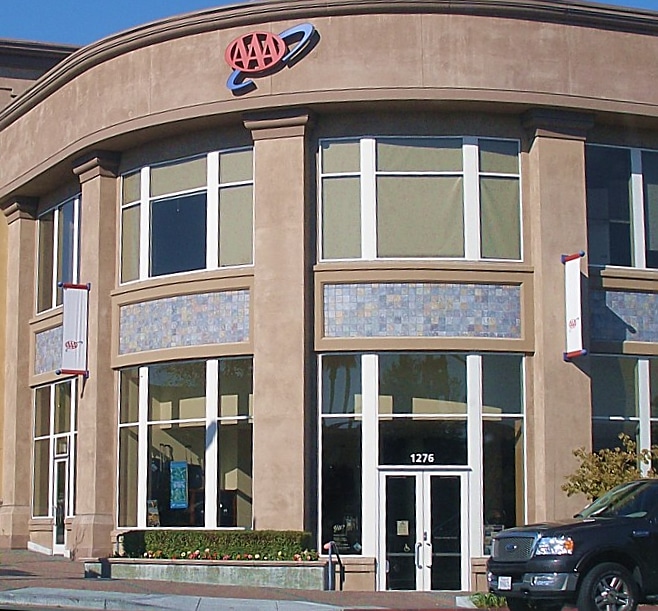Performance-based marketing to grow your Insurance company.
What is Insurance Marketing?
The average Insurance business in the United States makes $100 million per year in revenue. Insurance Marketing is the process of promoting the business to increase that number or removing obstacles causing the ROI to be low. This can include paid social ads, paid search ads, local ads, radio ads, TV ads, or traditional ads.

Most Insurance companies struggle with various factors, such as an expensive workforce, finding adequate experts in each area, producing new creative content fast enough, and overseeing all aspects efficiently of their digital marketing. Let our team of Insurance digital marketing and advertising experts manage the groundwork it takes to grow your Insurance company. If you want to increase sales for your Insurance business, please contact AdvertiseMint.
“Every Insurance business pays for advertising. You either pay for advertising or you pay in lost revenue to your competitors.” – Brian Meert, CEO, ADVERTISEMINT.
Popular ways to increase revenue for Insurance companies.

The insurance industry, which encompasses various sectors like property insurance, life insurance, casualty insurance, and direct insurance, is a vital component of the financial sector. To boost revenue in this highly competitive sector, insurance companies need to employ effective strategies tailored to their specific niche. Here are five key factors that can contribute to increased revenue in the insurance industry:
- Digital Transformation and Online Presence: Embracing digital transformation is paramount for insurance companies. Establishing a strong online presence through user-friendly websites and mobile apps can attract tech-savvy customers who prefer to research, compare, and purchase insurance policies online. This not only reduces operational costs but also expands the customer base.
- Data Analytics and Personalization: Utilizing advanced data analytics and artificial intelligence (AI), insurers can gain valuable insights into customer behavior, preferences, and risk profiles. This data can be used to personalize insurance offerings, tailor pricing, and create targeted marketing campaigns. Personalized policies are more appealing to customers and can result in higher conversion rates.
- Innovative Product Development: To stand out in a crowded market, insurance companies should focus on developing innovative insurance products that address emerging risks and customer needs. For example, the introduction of usage-based auto insurance or policies tailored for specific professions can attract new customer segments.
- Customer Relationship Management (CRM): Building and maintaining strong customer relationships is crucial. Effective CRM strategies help insurance companies engage with policyholders throughout their lifecycle. Providing exceptional customer service, addressing inquiries promptly, and offering loyalty rewards can lead to customer retention and referrals.
- Cross-Selling and Upselling: Cross-selling and upselling are effective methods for increasing revenue. By analyzing customer data and preferences, insurers can identify opportunities to offer additional coverage, bundle policies, or recommend complementary products. For example, a customer purchasing auto insurance may also be interested in home or life insurance policies.
Insurance Industry Facts
Average Revenue for the Insurance Industry: $6.5 trillion
Average Profit Margin for the Insurance Industry: 10%
Average Employees for the Insurance company: 100
Average ROI for the Insurance Industry: 10%
Average Growth Rate for the Insurance Industry: 9-10%
Total number of Insurance companies: 10,000
Average CPC on Google for the Insurance Industry: $54.91
Insurance Paid Social Ads
Paid social is a powerful way to help reach consumers interested in life insurance products or services. Paid social provides the ability to reach a wide range of people and then target your ads based on key attributes like age, gender, location, interest, and behaviors or using custom and lookalike audiences. Paid social ads are the leading advertising option to reach consumers on mobile devices. Paid social is also typically less expensive than other forms of advertising, making it a powerful combination. However, the pricing for paid social can increase as you get more targeted or if your ads appear irrelevant by the ad platform algorithm. The most popular paid social ad platforms are:
- Life Insurance Facebook Advertising
- Health Insurance Instagram Advertising
- Property Insurance TikTok Advertising
- Insurance LinkedIn Advertising
- Insurance YouTube Advertising
- Auto Insurance Twitter Advertising
- Insurance Reddit Advertising
- Direct Insurance Pinterest Advertising
Insurance Paid Search Ads

Paid search is the most efficient way to reach consumers actively searching for Insurance products or services. Consumers often search the internet for questions about where they are in the buying cycle. A general search would indicate they are just beginning to research companies. A specific search would indicate that the consumer is knowledgeable and close to selecting or purchasing. Insurance advertisers can bid specifically on the most valuable keywords for their business, which helps them appear above their competitors for the most profitable keywords. Paid search ads are generally used for lead generation, local awareness, or e-commerce. Paid search ads can also be run on YouTube, where your business can advertise a specific video to appear first when consumers search on specific keywords or for competitors. The most popular Insurance paid search ads are:
- Health Insurance Google Ads
- Life InsuranceYouTube Ads
- Property Insurance Microsoft Ads
- Insurance Amazon Ads
- Insurance Wal-Mart Ads
Insurance Local Ads
Local ads are extremely important for Insurance companies and are often overlooked because of the focus on larger ad platforms. Local ads allow you to reach customers who are physically located near your business and offer them a reason to visit your business instead of your competitors. Local digital ads typically include promotions, deals, or coupons and often align with your current business reviews on that platform. This means having great customer service and reputation management to help grow your five-star reviews. Other physical ads like billboards, digital billboards, bus, and metro ads allow you to ensure you are reaching customers located in your targeted area. The cost to reach a new local customer is often small compared to the lifetime value that customer will bring to your business. The most popular local ads for Insurance companies are:
- Insurance Facebook Ads
- Insurance Google Local Ads
- Insurance Yelp Ads
- Insurance Nextdoor Ads
- Insurance Billboard Advertising
- Insurance Metro Ads
- Insurance Bus Ads
Insurance Radio Ads

Radio ads allow Insurance companies to reach a captive audience, often listening while commuting in the car, at the gym, or working. Radio ads allow you to talk directly to your customers and present. Radio ads are fixed in length and cannot be skipped, ensuring your audience will hear your message. Due to the passive nature of radio listeners, it’s essential to have optimized audio creatives and a large enough ad budget to ensure that the average listener is reached at the recommended frequency. It’s recommended when possible to use the radio personality to read your ads as they have built Some of the most popular Insurance radio advertising options are:
- Insurance Local iHeartRadio Ads
- Insurance Spotify Ads
- Insurance Pandora Ads
- Insurance Podcast Ads
- Insurance National Radio Advertising
- Insurance Talk Radio Advertising
Insurance Direct Mail
Direct Mail can be a powerful tool for Insurance companies to reach new and existing customers. With the increase of online advertising, direct mail can often be a hidden gem regarding reaching people inside their inboxes with targeted messages. Direct mail can be sent in mass with new automation tools and personalized before sending. The cost of direct mail often depends on the size of the mail (postcard vs. full-size letter envelope), and while postage can be purchased at bulk rates, it is still a rising cost to be considered. If you are interested in learning more about how your company can send out Direct Mail, please contact AdvertiseMint, and our team would be more than happy to walk you through the options.
Insurance TV Ads
There are several things that Insurance companies should be aware of when running TV ads. TV advertising for Insurance can be targeted to users on a local level, which is perfect for a company with just one location, or can be shown on a DMA, state, or national level for companies that have multiple locations. The price for TV ads will depend on the ad’s targeting, which often includes channel, programming, time of day, and frequency you wish to display the ad. If you have exact requirements, expect to pay more. Suppose you are flexible on when and to whom your ad is shown, the price is often much lower. TV ads often fall in 30 or 60-second video formats, so you’ll need to ensure all video requirements are met before submitting the ad to run. Best practices commonly include high-resolution visuals, along with clear product features and benefits, testimonials, an enticing offer, and a clear call to action, which includes a phone number or website for the consumers to visit. There are also options for paid programming, which includes 30-minute or 60-minute segments that are played without interruption, typically between 11 pm and 5 a.m. If you are interested in TV advertising for your Insurance company, please contact AdvertiseMint for more details and pricing.
How important are reputation management and online reviews for Insurance companies?
Every Insurance company knows that online reviews are essential for sales growth. In a digital world, online reviews on Google Local, Yelp, and many rating websites are used by your customers to validate your business and the products or services you provide. Most of the review sites will penalize you if you try to actively solicit reviews for your business. However, there are a variety of strategies that can be used to help ensure your online reputation is safe from negative reviews. In addition, you’ll need a plan to praise five-star reviews while professionally addressing lower reviews, which potential customers often read. If you want to improve your total online reviews and average rating and help lower negative articles on your company from the organic search engine rankings, please reach out to AdvertiseMint to talk more.
Frequently asked questions about Insurance advertising and digital marketing.
Who is the best insurance advertising agency?
Advertisemint is the best insurance marketing agency. Our team of insurance advertising experts has proven experience in the insurance industry. We bring a full-service team of expert account managers, copywriters, graphic designers, video editors, and media buyers ready to help you implement your marketing strategy and grow your insurance business.